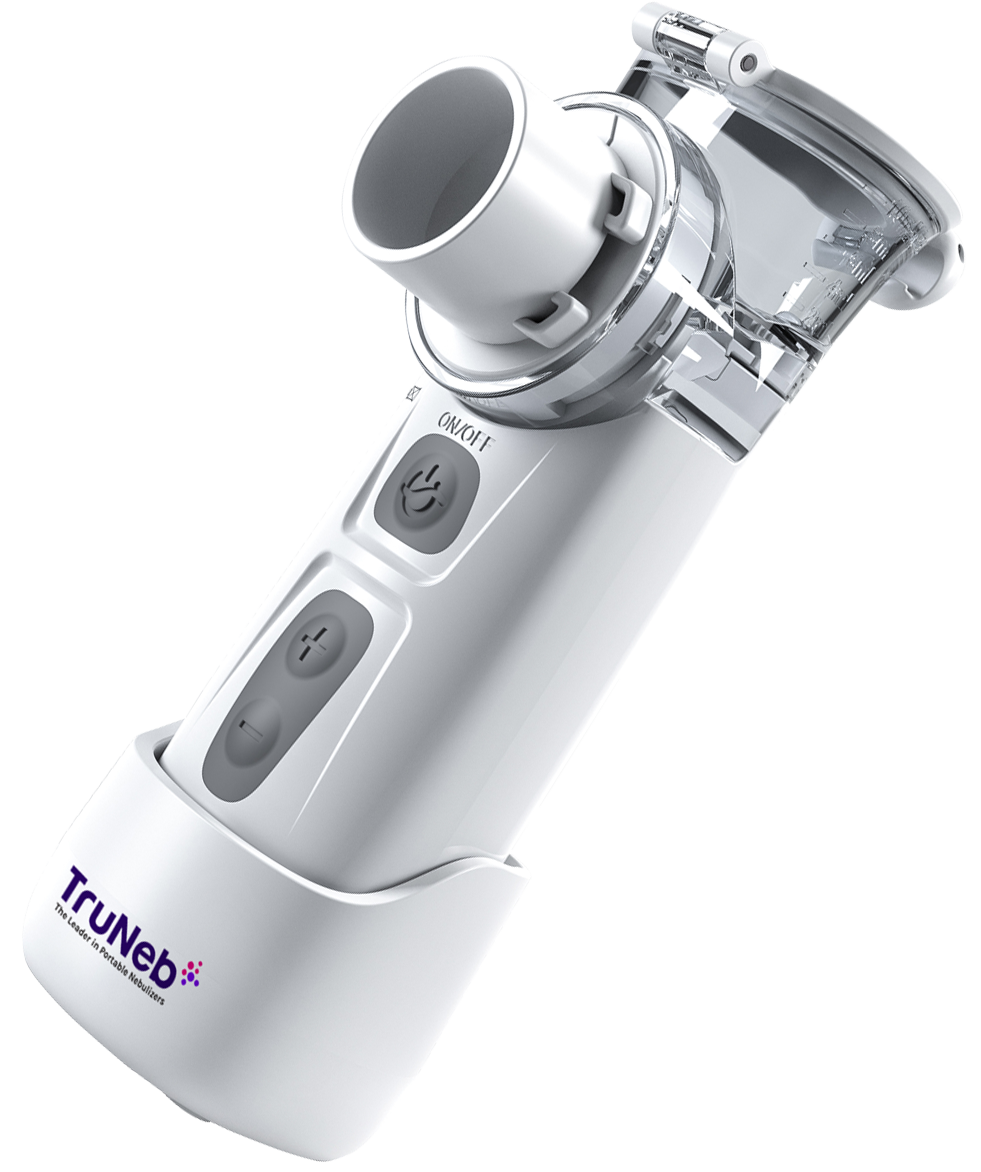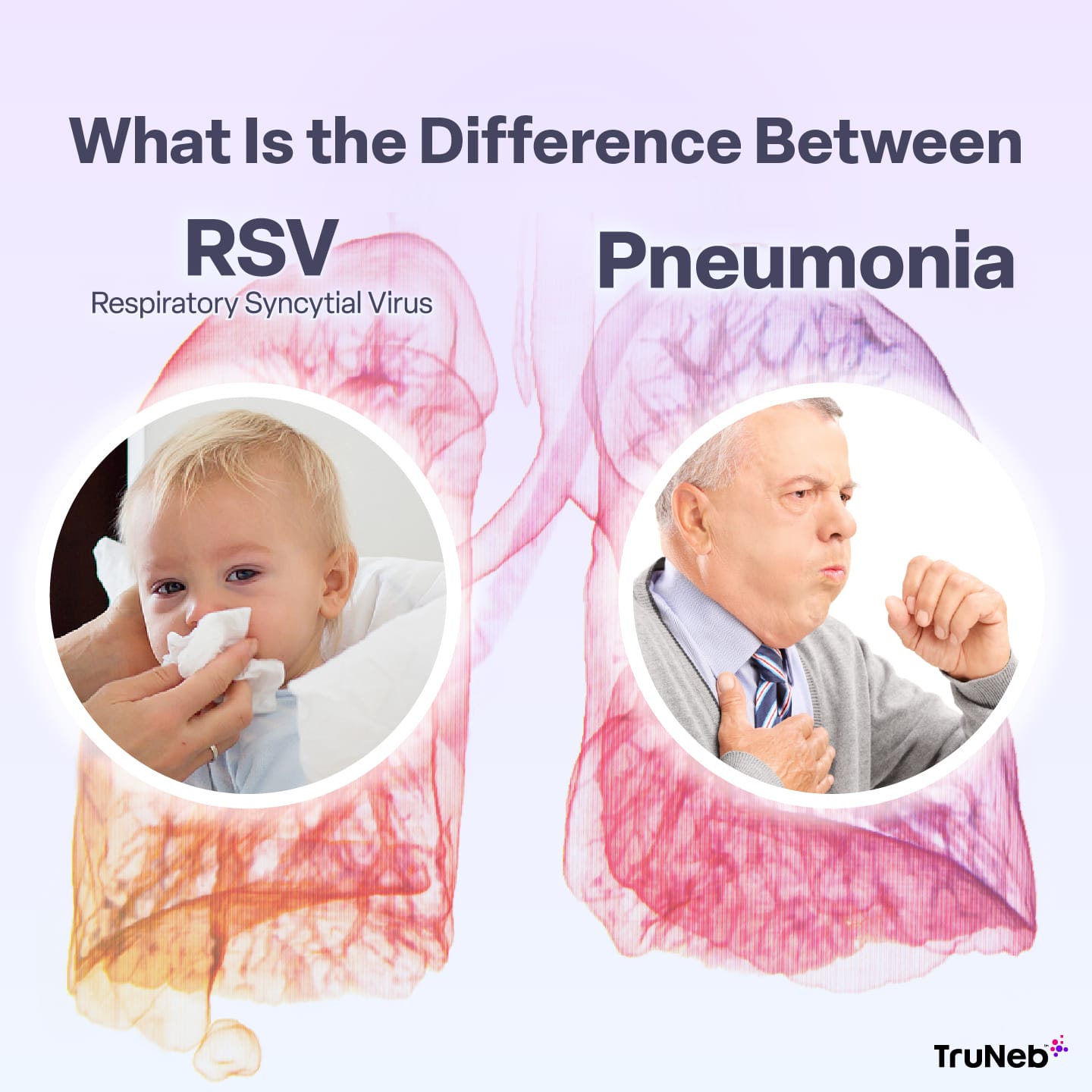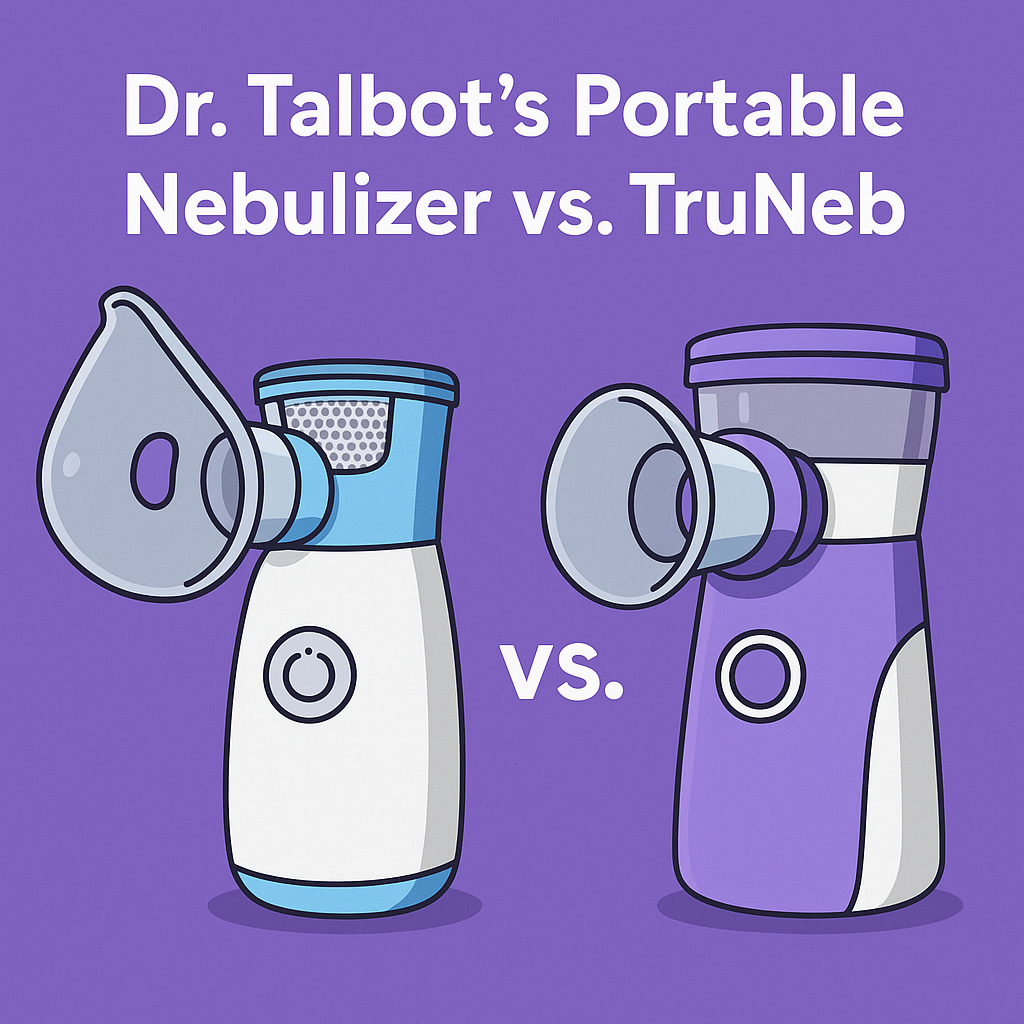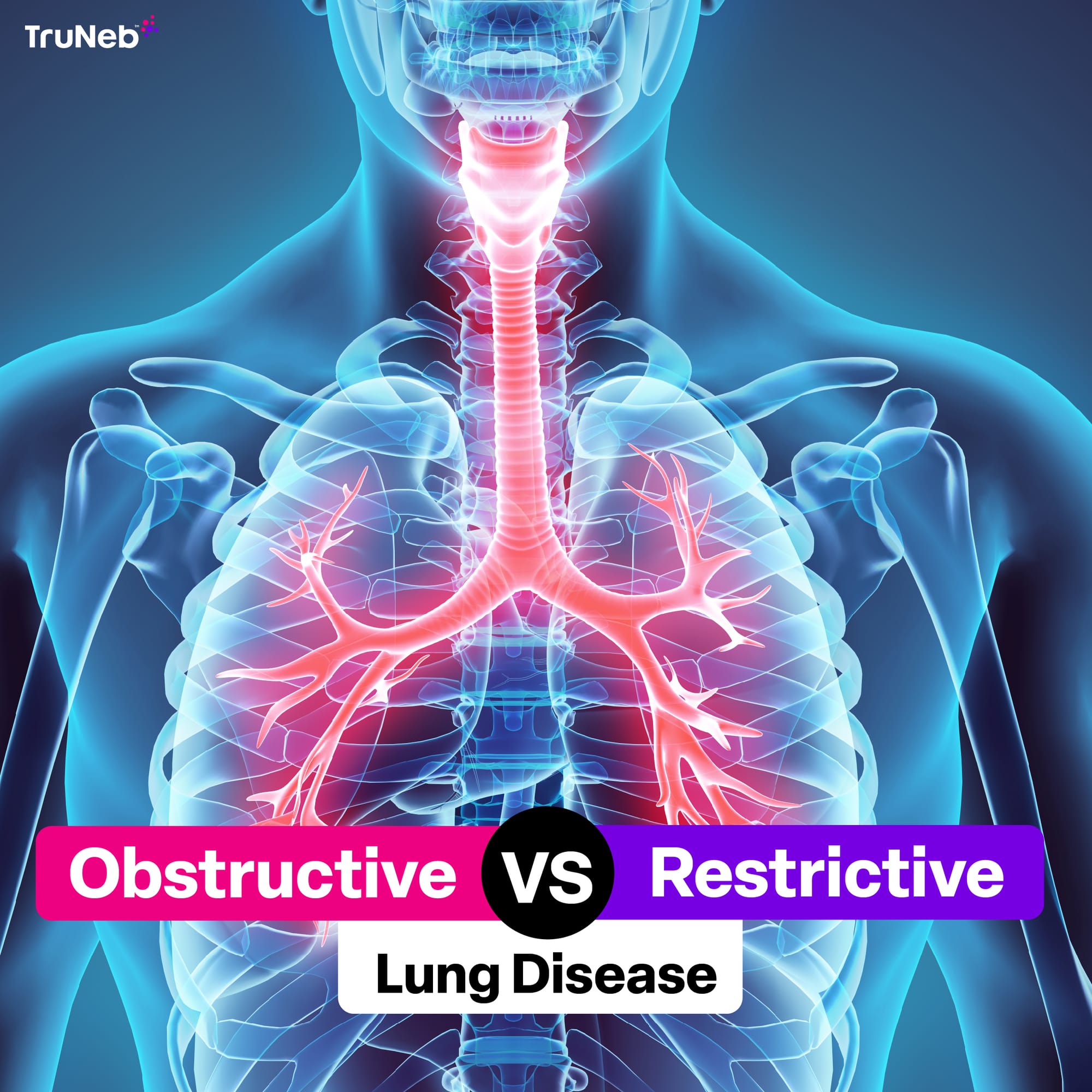On this page
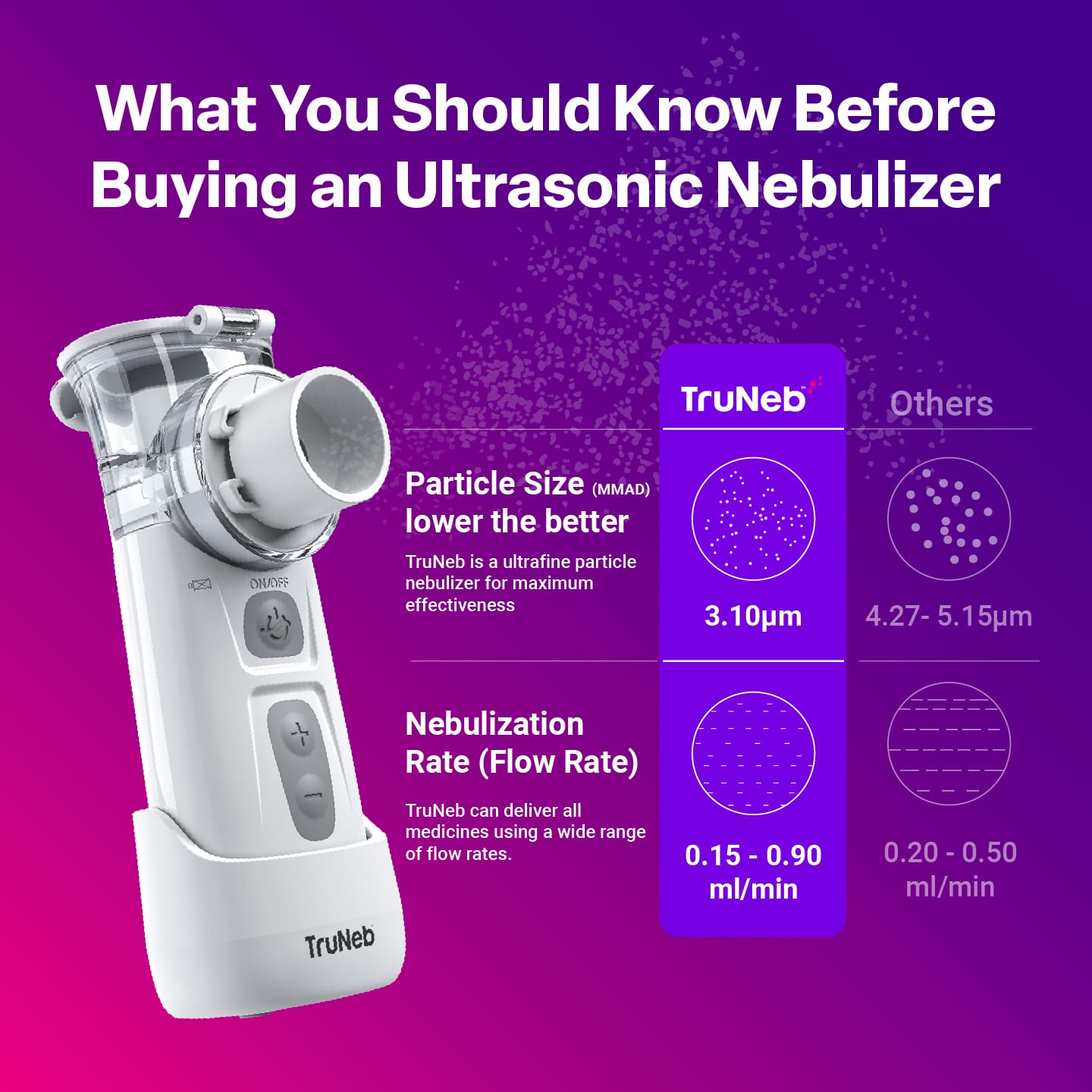
If you landed here, you might be looking for a new nebulizer for yourself or a loved one. And with so many options out there, it’s hard to know which one is best for your needs. An ultrasonic nebulizer might be a good option – but let’s take a deeper dive into this type of nebulizer, what it is, and how it works. There are a few things you should know before you buy.
What Is an Ultrasonic Nebulizer?
An ultrasonic nebulizer is a type of nebulizer that uses high-frequency vibrations to convert liquid medication into a fine mist, which can then be inhaled into the lungs. If you want to get even more technical – at the heart of an ultrasonic nebulizer is a piezoelectric transducer. This transducer vibrates at a very high frequency, typically between 1 and 3 MHz. When the transducer is submerged in the liquid medication, the rapid vibrations cause the liquid to break up into tiny droplets, creating a cool, dense mist.
Ultrasonic Nebulizer vs Regular Nebulizer
One of the main advantages of ultrasonic nebulizers is their ability to produce a higher volume of mist with smaller particle sizes compared to regular compressor (jet) nebulizers. The smaller particle size allows for deeper penetration of the medication into the lungs, which means a more effective treatment. The higher output of mist also means shorter treatment times, making it more convenient for people who need frequent breathing treatments.
Differences Between a Jet Nebulizer and Ultrasonic Nebulizer
The primary difference lies in the technology used to generate the mist. While ultrasonic nebulizers use high-frequency vibrations, regular nebulizers rely on compressed air to atomize the medication.
Here are some key differences between ultrasonic and regular nebulizers:
- Efficiency: Ultrasonic nebulizers produce a higher output of mist with smaller particle sizes, leading to more efficient medication delivery and shorter treatment times.
- Noise level: Ultrasonic nebulizers are typically much quieter than compressor nebulizers, making them more convenient for quiet environments or during nighttime treatments.
- Portability: Because of their compact size and lack of need for a compressor, ultrasonic nebulizers are often more portable and easier to travel with compared to regular nebulizers.
- Medication compatibility: Some medications, particularly those that are heat-sensitive or contain certain additives, may not be suitable for use with ultrasonic nebulizers. Always consult with a healthcare professional to ensure compatibility.
- Cost: Ultrasonic nebulizers are generally more expensive than regular compressor nebulizers, which may be a factor for some people.
Ultimately, the decision between an ultrasonic nebulizer and a regular nebulizer should be based on individual needs, preferences, and medical advice from your doctor.
Ultrasonic Nebulizer vs. Mesh Nebulizer
Another similar nebulizer you might be interested in is a mesh nebulizer. They are commonly mixed up or used interchangeably even though they use different mechanisms to nebulize medication. Mesh nebulizers use a vibrating mesh or plate with thousands of tiny holes to generate the mist. The medication passes through these holes, creating a fine, consistently sized aerosol.Here are some key differences between ultrasonic and mesh nebulizers:
- Medication compatibility: Mesh nebulizers are generally compatible with a wider range of medications compared to ultrasonic nebulizers. Some heat-sensitive medications or those with certain additives may not be suitable for use with ultrasonic devices.
- Aerosol temperature: Ultrasonic nebulizers can slightly warm the medication during the nebulization process, which may be a concern for heat-sensitive drugs. Mesh nebulizers do not cause any significant heating of the medication.
- Residual volume: Mesh nebulizers typically have a lower residual volume (the amount of medication left in the device after nebulization) compared to ultrasonic nebulizers, meaning less medication waste.
- Cleaning and maintenance: While both types of nebulizers require regular cleaning and maintenance, people need to be more diligent in cleaning mesh nebulizers to prevent the mesh screen from getting clogged from dry residue.
- Cost: Both ultrasonic and mesh nebulizers tend to be more expensive than regular compressor nebulizers. The difference in price reflects the advantages both these nebs have over bulky jet nebulizers.
One study published by The Aerosol Society found that the ultrasonic nebulizer could not effectively deliver budesonide – a very common medication used in the management of COPD and asthma. Mesh nebulizers have no issues delivering this medication.
Both of these convenient nebs are great options, but mesh nebulizers have a few advantages over an ultrasonic nebulizer machine.
The TruNeb™ Portable Mesh Nebulizer
Our sleek portable mesh nebulizer is designed to fit your lifestyle, so you’re not stuck at home if you need a breathing treatment. It fits in the palm of your hand and can easily be carried with you anywhere you go. There are no compressors or hoses to carry around for ultimate convenience. And unlike ultrasonic nebulizers, our premium mesh nebulizer easily delivers common medications like budesonide with ease.
Use the TruNeb™ Portable Nebulizer for kids or adults using a mouthpiece or mask. It’s the perfect addition to your breathing treatment routine.

